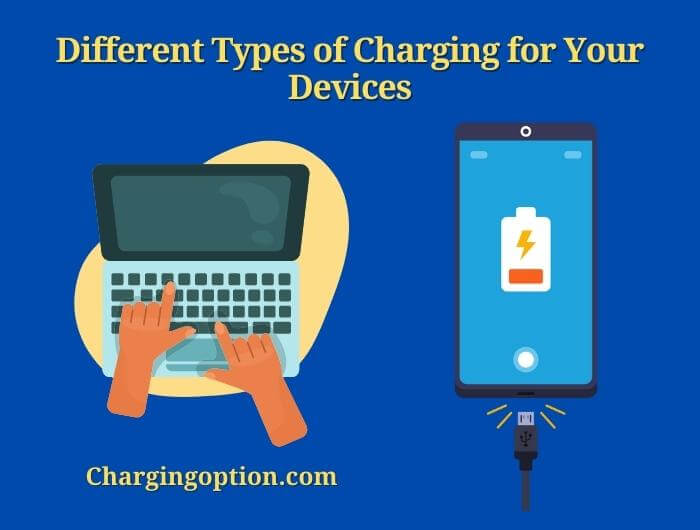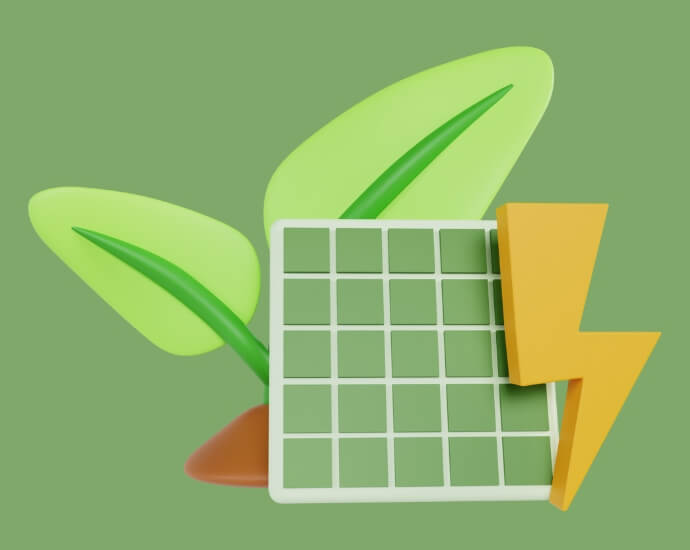In today’s digital world, we are highly dependent on our electronic devices, from smartphones to tablets, laptops, and cameras. These devices have become an essential part of our daily lives, and keeping them powered up is critical. But with so many different types of charging methods available, it can be overwhelming to choose the right one for your device.
Understanding the different types of charging is crucial for maintaining the longevity of your device’s battery life. Depending on your device’s compatibility, the right charger can make all the difference in how quickly your device charges and how long the battery lasts.

Wired Charging
Wired charging is the most traditional and widely used charging method. It involves a cable that is connected to the device and then plugged into an adapter or USB port. Different types of wired charging include USB-A, USB-C, and Lightning cables.
USB-A is the most common type of wired charging, and it is found in most laptops and computers. It is a standard USB connection that has been around for over 20 years. It is a slow charging method and can take several hours to fully charge a device, depending on the device’s battery capacity. USB-A is still widely used today, but it is slowly being replaced by USB-C.
USB-C is becoming increasingly popular, especially for high-end devices, because of its higher charging speed and versatility. It is a reversible connector, which means it can be plugged into a device in any orientation. It also has a higher power output compared to USB-A, making it ideal for charging larger devices such as laptops and tablets. USB-C chargers are compatible with a wide range of devices, including smartphones, tablets, laptops, and even gaming consoles.
Lightning cables are exclusively designed for Apple products. They are similar to USB-C in that they are reversible, but they only work with Apple devices. Lightning cables are fast charging and can fully charge an iPhone in about an hour. However, they are also more expensive than other wired charging options.
Wired charging is reliable and affordable, but the downside is that it can be restrictive because the device has to be plugged in and can only be used within the range of the cable.
The constant plugging and unplugging of the cable can cause wear and tear on the device’s charging port. However, it remains a popular charging method for many devices, especially those that do not support wireless or fast charging.
Wireless Charging
Wireless charging, also known as inductive charging, is a method of charging a device without using cables. It uses an electromagnetic field to transfer energy from the charging pad to the device, making it a convenient and hassle-free way to charge your device.
To use wireless charging, the device must be compatible with the Qi wireless charging standard, which is the most widely used wireless charging standard. Many high-end smartphones, such as the iPhone and Samsung Galaxy, support wireless charging. The charging pad itself is plugged into an electrical outlet, and the device is placed on the pad to initiate the charging process.
Wireless charging is slower than wired charging, but it is more convenient. The charging pad can be placed on a desk or nightstand, and the device can be charged simply by placing it on the pad. It is also safer because there is no risk of damaging the charging port on the device. Another advantage of wireless charging is that it can charge multiple devices simultaneously, as long as they are compatible with the charging pad.
One downside of wireless charging is that it can generate heat, which can reduce the battery life of the device over time. It is also less efficient than wired charging, as energy is lost during the transfer process. The convenience and safety benefits of wireless charging make it a popular choice for many users.
Wireless charging technology is constantly evolving, and newer standards are being developed to improve its efficiency and speed. For example, the latest Qi standard can deliver up to 15 watts of power, which is faster than many wired charging methods. As more devices become compatible with wireless charging, it is likely to become an even more popular charging method in the future.
Fast Charging
Fast charging is a technology that enables your device to charge at a much faster rate than traditional charging methods. It can reduce the charging time of your device by up to 50%, depending on the device’s battery capacity and the charging method used.
There are several different types of fast charging methods, including Qualcomm Quick Charge, USB Power Delivery, and OnePlus Warp Charge. These technologies use various methods to increase the charging speed, such as increasing the voltage and amperage of the charging current.
Qualcomm Quick Charge is a popular fast-charging technology that is found in many Android devices. It uses a higher voltage to deliver more power to the device, which enables it to charge faster. Quick Charge 4.0, the latest version of Qualcomm’s fast charging technology, can deliver up to 100 watts of power, making it one of the fastest charging methods available.
USB Power Delivery is another fast-charging technology that is becoming increasingly popular. It uses a higher wattage to charge the device, which enables it to charge faster. USB-C chargers that support USB Power Delivery can charge devices up to 70% faster than standard chargers.
OnePlus Warp Charge is a proprietary fast-charging technology that is used in OnePlus devices. It uses a higher amperage to deliver more power to the device, which enables it to charge faster. The latest version of Warp Charge can deliver up to 65 watts of power, making it one of the fastest charging methods available.
Fast charging is a convenient way to charge your device quickly when you are in a hurry. However, it can generate heat and put more strain on the device’s battery, which can reduce its lifespan. It is also important to note that not all devices support fast charging, and using a fast charger with an unsupported device can damage the device’s battery. It is important to check the compatibility of your device before using a fast charger.
Solar Charging
Solar charging is a method of charging a device using the power of the sun. It is an eco-friendly way to charge your device that is becoming increasingly popular, especially in areas where access to electricity is limited. Solar charging works by converting sunlight into electricity using photovoltaic cells.

To use solar charging, you need a solar panel or a solar charger that is compatible with your device. Solar panels come in different sizes and power outputs, so it is important to choose one that is appropriate for your device’s battery capacity. Solar chargers can be portable or fixed, and they come in various shapes and sizes.
The solar panel or charger is placed in direct sunlight, and the device is connected to it using a charging cable. The device will charge whenever there is enough sunlight to generate electricity. The charging speed will depend on the strength of the sunlight and the capacity of the solar panel or charger.
One advantage of solar charging is that it is eco-friendly and sustainable. It does not require any electricity from the grid, and it does not produce any emissions. Solar charging can also be very convenient for outdoor activities such as camping, hiking, and boating, where access to electricity is limited.
There are some downsides to solar charging. The charging speed can be slow, and it is heavily dependent on the weather conditions. Cloudy or overcast days can significantly reduce the charging speed, and it may not be possible to charge the device at all in some conditions. Solar panels and chargers can be expensive, especially those with higher power outputs.
Trickle Charging
Trickle charging is a method of charging a battery at a low, continuous rate to maintain its charge and prevent it from fully discharging. It is a common technique used in devices that require long-term battery back-ups, such as cars, boats, motorcycles, and uninterruptible power supply (UPS) systems.
The main advantage of trickle charging is that it prevents the battery from becoming completely depleted, which can lead to irreversible damage and reduce the battery’s lifespan. Trickle charging helps maintain the battery’s charge level and extends its life, especially for lead-acid batteries, which are commonly used in vehicles and backup power systems.
There are different methods of trickle charging, but the most common is to connect the battery to a charger that supplies a constant low voltage and low current. This low current is usually in the range of 1% to 2% of the battery’s rated capacity, and the voltage is slightly higher than the battery’s resting voltage.
Trickle charging is typically used in applications where the battery is not frequently used, but still needs to be kept charged, such as seasonal vehicles like boats or RVs. It is also useful for maintaining the charge of backup batteries in UPS systems, where the battery may sit idle for long periods of time until a power outage occurs.
One of the drawbacks of trickle charging is that it can take a long time to fully charge a battery, depending on the size of the battery and the charging rate. For example, a 12-volt battery with a capacity of 100 Ah would take approximately 50 hours to fully charge using a trickle charger that supplies 1% of its rated capacity.
Trickle charging can also be less efficient than other charging methods, as it may require the charger to operate continuously, even when the battery is fully charged. This can result in energy waste and increased electricity costs, as well as potential safety hazards if the battery becomes overcharged.
In a Nutshell
There are many different types of charging methods available, and each one has its own advantages and disadvantages. Wired charging is the most common method of charging, and it is fast and reliable. Wireless charging is becoming increasingly popular, and it is convenient for those who want to avoid the hassle of cables.
Fast charging is a convenient way to charge your device quickly, but it can put more strain on the device’s battery. Solar charging is an eco-friendly and sustainable way to charge your device, but it is heavily dependent on weather conditions and can be expensive.
Choosing the right charging method depends on your needs and preferences. Wired charging is ideal for those who need to charge their device quickly and reliably, while wireless charging is great for those who want to avoid the hassle of cables.
Fast charging is convenient for those who need to charge their device quickly, but it is important to use it responsibly and only when necessary. Solar charging is ideal for those who want an eco-friendly and sustainable way to charge their device, but it may not be suitable for everyone.
It is important to choose the appropriate charging method for your device and to use it responsibly. Overcharging or using incompatible charging methods can damage your device’s battery and reduce its lifespan. With proper care and attention, your device’s battery can last longer and provide you with reliable and convenient power whenever you need it.
